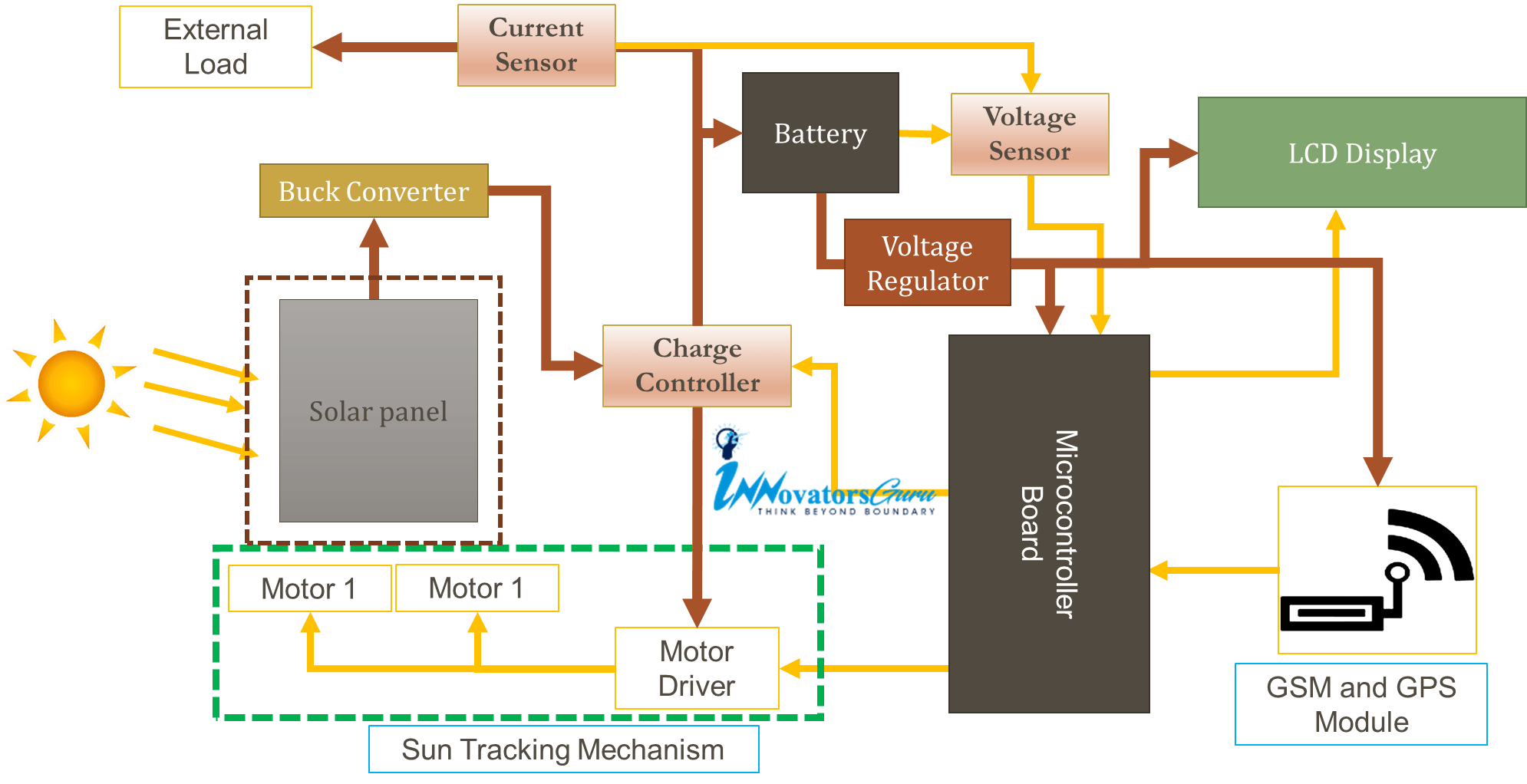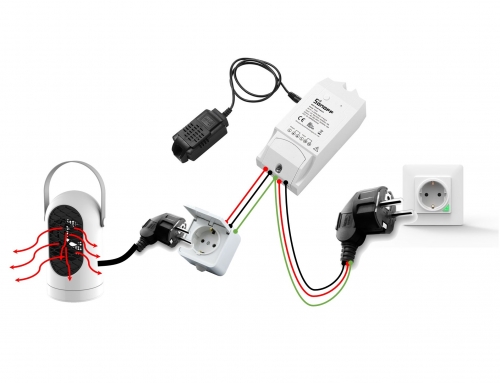Dual Axis Solar Tracking System Based on GPS Satellite
Project Abstract
With the growing demand for energy worldwide, a drastic shortage of non-renewable sources of energy will be observed now. Hence, there is a need to replace these energy sources with those that are abundant and renewable. For collecting solar energy from sun, the current fixed configuration of solar panels is used which provides only 22 percent efficiency as it faces the sun only for a limited amount of time per day.
In this project, a smart dual axis solar tracker design which also monitor and logs data using IOT(internet of things). we monitor the most important parameter such as solar irradiation, battery voltage, temperature, sun angle and generated power. The solar tracker consists of five main blocks 1) Controller 2) Motor Driver and motors 3) Charge Controller with buck converter. 4) GPS receiver 5) Datalogger.
The tracking system utilizes the GPS module and a digital compass sensor for determining the location and the heading feedback of the system respectively. The output voltage efficiency of the automated tracking configuration has been compared and analyzed with a fixed configuration solar panel.
Keywords: Dual Axis Solar tracking, GPS, GSM, Atmega328P, Sun Tracking
Introduction
In the years ahead the demand for energy will escalate, whereas the conventional fossil fuel energy will deplete in a rapid pace.
Sun energy is one of the great pure useful power supply, the sun radiation supply the earth with a big amount of solar radiation power. The earth receives about 84 terawatts of power and our world consumes about 12 terawatts of power per day. This radiation can be converted to electrical power by photovoltaic pv cells. Additionally, PV technology is a fast growing technological progress that requiring very little maintenance with zero carbon foot-print.
The performance of a PV panel is not only dependent upon the solar irradiance power, weather condition, and the ambient temperature, but it also depends on the solar radiation’s incidence angle to the PV panel.
During the day, the sun appears to move through the sky from east to west, therefore the angle between sun and a fixed PV surface is continually changing. Thus, the power density on a fixed PV module is less than that of the incident sunlight. Lately, there are many works have been taken in order to maximize the power extraction from the PV panel. Solar tracking system offers a practical technology solution to improve the power efficiency generated by the PV panel. Extensive research and experiment have shown that by maintaining consistent direct exposure from the sun to the PV module, the tracking system able to produce up to 40 percent more power over a fixed-tilted (non-tracking) PV panel
Problem Statement
Generally, the solar tracker is a device used for aligning a PV panel towards the sun. In this context, there are three types of the solar tracking system, namely passive tracker, active tracker and open-loop tracker. Passive tracker uses two canisters filled with compressed gas fluid that placed each in the east and west of the tracking. However, this gas tracker rarely points the PV panel direct to the sun due to the unpredictable ambient temperature. Yet, as the advancement of sensor technology, the light sensor is used in the active sun tracker system and it is placed at various locations at the tracker to determine the best
sun position, which is done by tilting the PV panel using actuators. Nevertheless, the cloud and shadow effect are the major the drawback of the system. This consequence brings disadvantages because power is wasted to drive the tilting actuator back and forth for during its searching mode. Other than that, the open-loop tracker is also commonly used for tracking the sun path as in Fig. 1. The tracker uses a predetermined astronomical database to determine the sun position for any given time and location’s coordinate by using micro-controller or PLC. In addition, the open-loop tracker is based on the altitude and the azimuth position of the sun, therefore, this system is not dependent on the ambient temperature and weather. This circumstance gives great advantages, such that it will not eliminates unwanted power dissipation and complexity. Conversely, the open-loop tracker also has demerits that could reduce the efficiency output, as an instance, tracker’s misalignment during setup due to human error. Besides, before the deployment of the solar tracker, solar path database is set manually by the supplier or contractor. As we all know, every location has its unique solar path, thereupon, it will involve extra manpower that will increase the installation or setup cost.



![IoT Based Distribution Transformer Monitoring System Using Arduino | PPT | Code | Report [ 2020 ]](https://innovatorsguru.com/wp-content/uploads/2020/02/IoT-based-transformer-health-monitoring-system-500x383.jpg)

Hello there! This is my first visit to your blog! We are a group of volunteers and starting a new project in a community in the same niche. Your blog provided us beneficial information to work on. You have done a wonderful job!